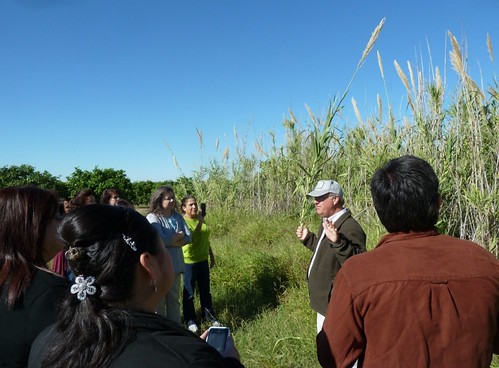
This post is part of the Science Tuesday feature series on the USDA blog. Check back each week as we showcase stories and news from USDA’s rich science and research portfolio.
The goal of USDA’s Hispanic-Serving Institutions National Program (HSINP) Future Scientists Program is to enhance the scientific knowledge of teachers, helping them to become more effective in encouraging student interest and progress in science. Teachers in the program attend two-day summer institutes at Agricultural Research Service (ARS) labs nationwide, where scientists introduce them to various research projects. ARS researchers share scientific knowledge with the teachers, who then share it with their students to encourage them to become future scientists.
One of the catalysts for this lofty goal is a tiny, inconspicuous and innocuous caterpillar—the corn earworm that wreaks havoc in corn fields nationwide as an agricultural pest. This program began in 2003. I brought 10 teachers into the ARS Southern Plains Agricultural Research Center (SPARC) in College Station, Texas, for a summer institute that included teachers studying in corn research plots searching for corn earworm caterpillars in 100-degree heat! It was the first time I made caterpillars the focus of this program.
Since then, the program has expanded to include students visiting various ARS research labs. I have also harnessed the caterpillar’s “intrigue factor,” since students are intrigued by insects. They are intrigued by the magic of metamorphosis—particularly when the caterpillar transforms into a beautiful moth. They are intrigued that they can learn by observation. They are intrigued enough to ask questions about the worm and then conduct research projects to find answers. The ARS Southeast Area insectary in Stoneville, Mississippi, generously supplies the program with all the worms we need.
Students conduct research on the worms and then make presentations at the end of their school year at their local ARS lab at a Future Scientists Student Research Presentation Day. They also take tours and learn about other research projects at the labs.
One student who presented in 2004 subsequently became a student summer worker at SPARC while in high school, continued working while studying entomology at junior college, and has just received a scholarship to attend Texas A&M University.
This year, his teacher brought four of her current fifth-graders to present their research on the worm. These are just four of the 86,000 students (grades K through 12) whom we have interacted with in the past 21 years of the Future Scientist Program. During that time, 5,600 teachers have studied Ag Science at 36 of the ARS labs nationwide.
